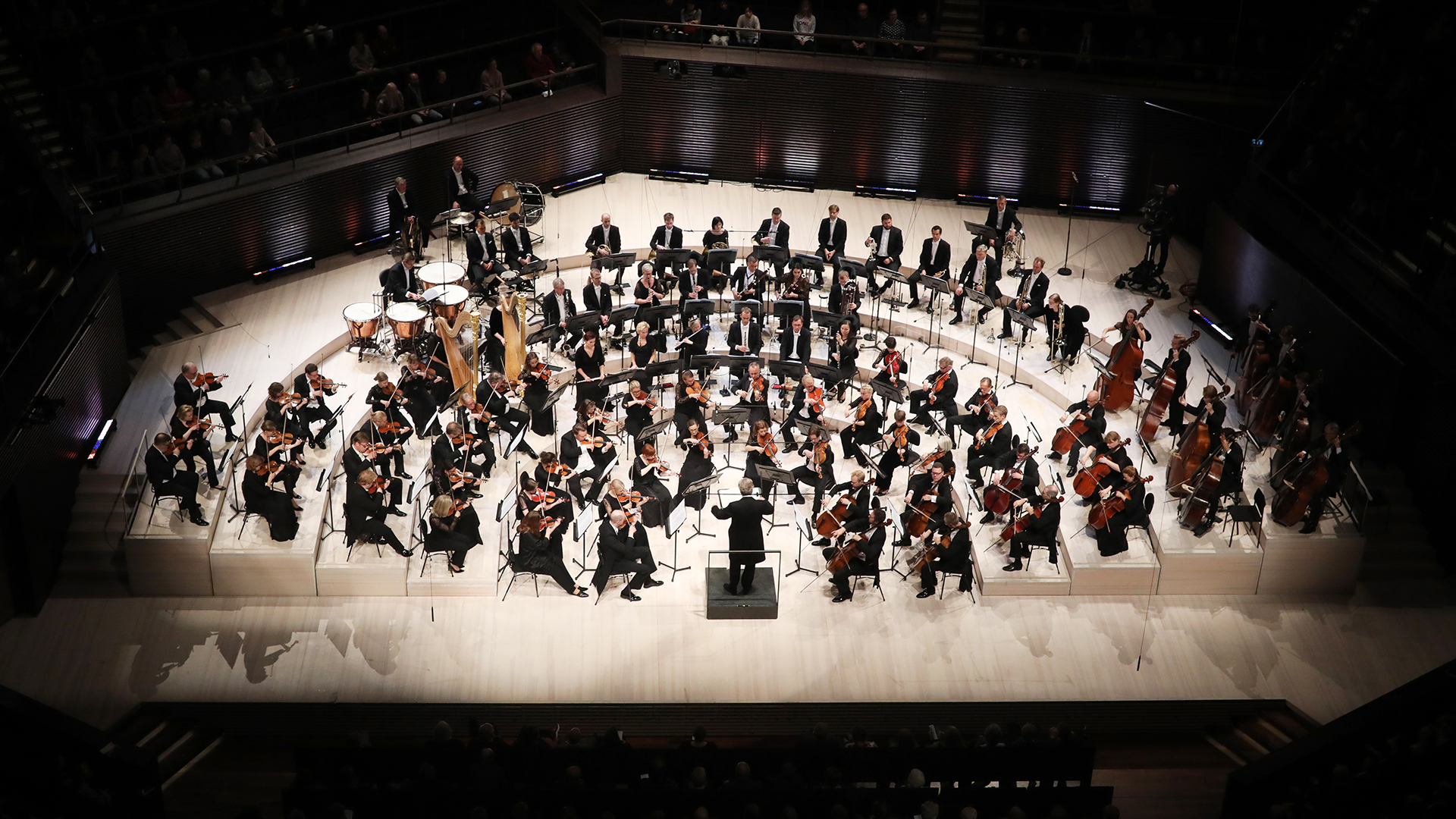Timeline
-
Sibelius & Saraste series
-
Jari Eskola begins as General Manager
-
Artistic Leadership Team begins
-
Covid spring 2020 and Impromptu Concerts
-
HPO Kids project to continue in 2020
-
-
Home city tour to Vuosaari and Kannelmäki
-
HPO and Susanna Mälkki release their first disc
-
Visual Overture and Encounters Club
-
Aleksi Malmberg begins as General Manager
-
Nordic Council Music Prize awarded to Susanna Mälkki
-
Finland100 and Helsinki Variations
-
HPO and Sibelius Academy enter into chamber music partnership
-
Susanna Mälkki begins as Chief Conductor of the HPO
-
Prize for HPO programming
-
Sibelius Violin Competition & tour with Christel Lee
-
Principal residents of the Helsinki Music Centre launch an Orchestra Academy
-
-
Tour to Germany and The Netherlands
-
Tour to Austria and Germany
-
Second godchild project begins
-
The HPO moves to the Helsinki Music Centre
-
Peter Zimmermann records the Sibelius Violin Concerto, Bard and Wood-Nymph with John Storgårds conducting
-
John Storgårds as Chief Conductor of the HPO
-
Tour to China under John Storgårds and Okko Kamu
-
Luonnotar is recorded with Soile Isokoski as the soloist
-
South American tour under Saraste and Segerstam
-
First godchild project begins
-
Central European tour – 100 years from the Paris tour
-
Helsingin Sanomat: “Leif Segerstam’s Sibelius disc is unusually good!”
-
Recording of Einojuhani Rautavaara: Symphony No. 7 “Angel of Light” & Annunciations
-
Leif Segerstam as the HPO’s 11th Chief Conductor
-
Pekka Kuusisto wins the Sibelius Violin Competition
-
The Pro Filharmonia is founded
-
Sergiu Comissiona as conductor of the HPO
-
-
Paavo Berglund begins recording the complete Sibelius symphonies
-
Okko Kamu as conductor of the HPO
-
Ulf Söderblom as conductor of the HPO
-
-
Paavo Berglund as conductor of the HPO
-
An interregnum of several conductors
-
The HPO moves its concerts to Finlandia Hall
-
Extensive US tour with Panula and Segerstam
-
Seppo Heikinheimo joins the HPO administration
-
The Sibelius centenary and a European tour
-
Jorma Panula as conductor of the HPO
-
Andrés Segovia as soloist with the HPO
-
-
-
Heitor Villa-Lobos as guest conductor
-
Tauno Hannikainen as conductor of the HPO
-
Revival of the concerts for schoolchildren
-
The HPO’s last Sibelius premiere, The Lonely Ski Trail, arr. for narrator, string orchestra and harp (cond. Martti Similä)
-
Martti Similä as conductor of the HPO
-
Haphazard conductor policy
-
Holger Fransman is appointed principal horn
-
The HPO represents Finland in London
-
Schnéevoigt conducts the first concert for schoolchildren
-
Ottorino Respighi guest conducts the HPO
-
Georg Schnéevoigt conducts the City Orchestra
-
Symphony No. 7, Tapiola and the Overture to The Tempest, all Finnish premieres (cond. Kajanus)
-
Morceau romantique sur un motif de M. Jacob von Julin
-
Symphony No. 6, Valse chevaleresque, Suite caractérisque, Suite champêtre
-
Suite mignonne & Valse lyrique (cond. Karl Ekman)
-
Symphony No. 5, final version, Humoresques for violin and piano (sol. Paul Cherkassky)
-
The Jaeger March for male choir and orchestra
-
50th birthday concert: Symphony No. 5, first version, Aallottaret, Finnish premiere, Serenades 1 & 2 for violin and orchestra (sol. Richard Burgin)
-
Kajanus directs the Philharmonic Orchestra
-
The First World War raises problems
-
Negotiations begin over changing the name of the Philharmonic Orchestra to the Helsinki City Orchestra
-
The orchestra war breaks out
-
Scènes historiques I & II
-
Symphony No. 4 (premiere), In memoriam, The Dryad, Night Ride and Sunrise (Finnish premiere)
-
Gustav Mahler as guest conductor with the Philharmonic Orchestra
-
Symphony No. 3, Pohjola’s Daughter (Finnish premiere), Belshazzar’s Feast, orchestral suite
-
Pelléas et Mélisande, orchestral suite, Violin Concerto (Finnish premiere of the revised version) (cond. Kajanus)
-
Violin Concerto, Cassazione, Have You Courage?, The Origin of Fire, for baritone, male choir and orchestra & Valse triste
-
Symphony No. 2, Overture in A Minor, Impromptu for women’s choir and orchestra
-
The Paris World Fair – the “Paris Tour”
-
Send-off to the Paris World Fair tour: Finlandia, Symphony No. 1, revised version (cond. Kajanus)
-
Symphony No. 1, The Song of the Athenians & Music for the Press Celebrations
-
Lemminkäinen, revised version, The Rapid-Rider’s Brides
-
Lemminkäinen, first version & Jungfrun i tornet (The Maiden in the Tower)
-
The Helsinki Orchestra Association becomes the Helsinki Philharmonic Society
-
-
-
Willy Burmester takes over as leader of the orchestra
-
-
Johan Svendsen as guest conductor
-
Kajanus’s practical orchestra school
-
The first May Day matinée
-
Eugène Ysaÿe as soloist with the orchestra
-
-
© Helsinki Philharmonic Orchestra 2026

